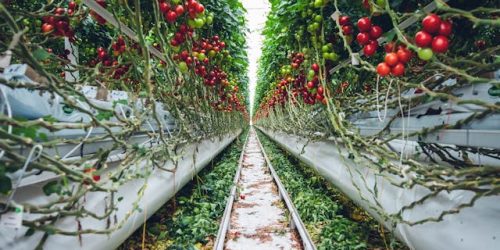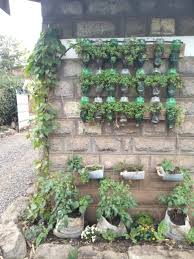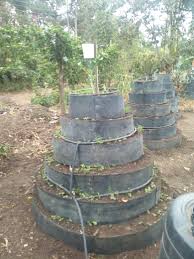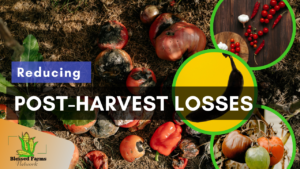A major problem being experienced in the agricultural sector, not only in Kenya but in the whole world, is limited space. As of 2022, the world population was 7.9 billion. According to projections on population, it is expected that there will be continued growth. The increase in population has put strife on the agricultural land, with an increased need for urbanization and industrialization. With agricultural land reducing gradually, it leads to a strain on the process of food production.
Farmers are now expected to use a reduced acreage to produce an even higher quantity of food. The strained food system is further leading to degraded soil systems, and reduced biodiversity. This pushes for the need for farmers to come up with innovative ways to meet the dietary needs of the population. A technology that has recently grown and is being adopted throughout the world is vertical farming, an approach that aims to maximize little space while increasing the rate of food production.

Why Should We Propagate Vertical Farming?
Vertical farming is a technique of growing crops in stacked layers structures. The structures are vertically included to enable a higher production per square meter, within a controlled environment. The central goal of vertical farming is to ensure efficient land use and reduce the impact of agriculture on the environment. Vertical farming is considered a sustainable solution for the challenges that the agricultural sector is facing. This technique has gained a lot of adoption in urban agriculture, where modern farmers can incorporate vertical structures in their small backyards, warehouses, and skyscrapers.
In Kenya, vertical farming is a technology that is gradually being incorporated mostly in urban centers. There has been a growing rise of farmers in urban areas. These farmers are mostly modern farmers, in that they seek out innovative techniques to cultivate crops for their family use, while some even advancing to using vertical farms to become agripreneurs. This technology has been proven to be effective in dealing with some of the critical challenges facing Kenyan agriculture like land scarcity, water shortage and the increased need for sustainable food production. It involves incorporating systems that are global, and aligning them to the local conditions of each farmer. It is this capability that makes vertical farming one of the quickest agricultural techniques for adoption. Further it allows the farmer to customize it to mee their individual needs.
The major characteristics of vertical farming are:
Uses multi-layered system – vertical farming involves the utilization of various systems in a vertically inclined system. The layers stacked can vary from locally available waste bottles to intensive systems that use stacked trays in warehouses or greenhouses. The common characteristic is that they occupy space vertically, thus increasing the amount of crop produced per acreage. The ability to stack the growing systems allows farmers to utilize spaces that were otherwise underutilized like existing buildings, small plots of land, balconies, and even rooftops. With the number of flat-roof houses increasing in the country, all households can use this technique to grow fresh crops for their home use.
Water efficiency – This technology is not limited to use by the available water. It is greatly encouraged for farmers in arid and semi-arid areas. Vertical farming utilizes a water recycling system, which depending on the complexity of the system greatly reduces the water consumed per plant. It further ensures that the root system for each plant has adequate access to water. Some advanced vertical systems use hydroponics and aeroponics which further increases the efficiency of water use. Irrigation systems can also be introduced into the system to address any challenges that might be caused by water availability.
Local adaptation – when people name vertical farming an innovation they are quite right. There is no fixed system for vertical farming. Over the years farmer have changed various components of vertical farming to meet, the individual needs of their location. Most small-scale farmers in Kenya utilize old used bottles as growing platforms for their crops. Further, they focus on high-value crops that have a huge local demand like herbs, small fruits like strawberries and leafy greens. The unifying characteristic is their stacked position, but the stacking process, technique, watering system, and arrangement vary based on the individual needs of a farmer.
Sustainability and Innovation As stated above, vertical farming is the optimal innovation. The more innovative a farmer is, the greater the produce and benefits. Systems like modular systems, multi-story gardens, gutter systems, and green walls, have been adopted to contribute to food production in Kenya. Further, it promotes sustainability as there is a reduced carbon footprint as compared to normal farming. Also, when done properly it is expected to produce a higher rate of production.
Can Vertical Farming be done in Small-Scale?
Especially in Kenya, most farmers using vertical farming are small-scale farmers who aim to produce maximum output from minimal space. While vertical farming as a technology has gained popularity in the recent years, farmers have utilized similar systems for many years, without fully knowing the name. An example is I grew up in the arid areas of Kajiado, and we had old buckets outside our house with crops, with plastic bottles stacked on top to plant dhania and Sukuma. As such, vertical farming can be used for small-scale farming, and with introduced innovations, a more refined type of farming. It should be encouraged to all small-scale farmers, especially whose major limitation is land and water.
Systems in Vertical Farming
Vertical farming employs several systems and techniques, each with its own set of requirements and benefits:
Soil-Based System
This is the most common vertical farming system in Kenya. Where soil-filled containers or planters are stacked together. They are mostly used in multi-tiered shelves, or mounted on the wall. This is considered the most common technique as everything needed in the system is already available to farmers. The initial set-up cost is relatively low as farmers can start with recycled materials like old buckets and plastic bottles. An issue with this system is that it requires more water and space compared to the aeroponics and hydroponics system.
Hydroponics
With the advancement in technology, hydroponics is growing to be one of the most effective alternatives to soil-based systems. Hydroponics is the technology of growing plants without soil. Rather, a nutrient-rich solution is used, while supported by inert growing media like coconut coir or perlite. This system is considered more effective as the nutrient-rich solution is specifically developed for the plant. Thus, a plant has easy access to all the nutritional components it needs. It is also less prone to pests and diseases that would otherwise be found in soil. The major limitation of the hydroponics vertical farming system is the initial set-up cost. The setup requires a nutrient delivery system, pH control equipment, and water pumps. This can greatly increase the cost. But the output is better and the system is considered efficient and scalable.
Aeroponics
Like the hydroponics system, the plants are not grown in soil. In the aeroponics vertical system, the plants are grown, with their roots suspended in the air where they are exposed to nutrient mist/ the rate of nutrition absorption and oxygenation is considered to be highest/ also, just like the hydroponics system, it can be quite expensive to install an aeroponics vertical system as it requires a misting system, a controlled environment, and air pumps. While it is more complex and costly, the production rate is higher and more efficient.
Types of Vertical Farming Technologies
Old Bottles and Buckets
Most starters of vertical farming farmers use old bottles and buckets as they are easily accessible and cost-effective. Old buckets and large plastic containers are readily available and excellent for stacking in layers.

The buckets and bottles are prepared by drilling drainage holes at the bottom, and other modification to increase their efficiency. They can either be stacked on top of each other, or attached to a wooden or metallic frame to create tiers. In some cases, the bottles are hinged on the wall, where there is conservation of water and space, where the water from one bottle trickles down to the layer under it.
Different types of plants can thrive in such a system. The most commonly planted crops are: spinach, lettuce, coriander, and even strawberries thrive in such a system. This DIY vertical farming method is a great way to grow food sustainably in small spaces, contributing to food security while recycling household items.
Multi-Storey Garden Materials
A multi-story garden, sometimes called a vertical garden or cone garden is the stacking of layers of soil surrounded by a durable material, leading to about 4 to 6 stacks of soil, where crops, mostly vegetables are planted. greenhouses.

The surrounding material in the pyramid can either be a shade net or a dam liner. A dam liner is usually preferred due to its durability, where a system can be used for up to five years without any issues. These systems have gained popularity in arid and semi-arid regions where there is limited land space.
The most common crops growing in multi-story gardens are vegetables like kale, spinach, carrots, and coriander, herbs like rosemary and mint, and fruits like strawberry. These gardens can be placed either in the open or in enclosed spaces like greenhouses.
To prevent compacting and the effects of pests and diseases, it is encouraged that the soil is mixed with manure at a 2:1 ratio. Drip lines can also be included in the system to water the plants. It is advisable to water them three times per week based on the prevailing weather. Studies on the efficiency of this system show that in a 2M-by-2M area, a multi-story garden can hold up to 250 plants, compared to conventional ground farming which holds 60 plants, and sack garden which holds 150 plants. Their efficiency is linked to the arrangement of the cones, where each plant has full access to sunlight, unlike most vertical garden farming technologies, where some plants have issues with access to natural light. A major disadvantage is water consumption might be higher for this system compared to other vertical farming system.
Gutter System
This is another type of vertical farming technology. Just like the use of old bottles, this system uses gutters, which are mounted on frames, walls or poles, thus allowing them to be stacked together. The gutters are angled slightly to ensure a better flow of water and drainage. Gutter systems can either be soil-based on hydroponics. The hydroponic system is preferred as it is less heavy and thus increases the durability of the system. In such a case, growing mediums such as cocopeat and vermiculite are used, with plants being placed in slots along the gutter length. This system is efficient for planting leafy greens, strawberries, herbs, and lettuce. It can be adapted to different areas including small gardens, balconies, and rooftops.
Modular Farms
This is an advanced form of vertical farming technology. The major limitation to the adoption of this system is the initial cost. The success of this system depends on integrating lighting systems, climate control, and irrigation systems. The cost varies based on the quality of these features used, and the size. Further, farmers need technical skills to set up and maintain. A major advantage is that they are very flexible, and can easily be expanded.
Container Farms
This technology involves the customization of a shipping container to carry out vertical farming. The containers are modified with climate control, hydroponic or aeroponics systems, and artificial lighting. The container is an efficient means of creating a controlled environment for the crop’s growth, thus the output is considerably high. At the same time, the initial cost is high just like a modular farm. Another limitation is that they are not highly scalable and flexible like modular farms.
Consideration
When implementing vertical farming, especially in urban areas, several considerations must be addressed to ensure success:
Access to Light
Access to adequate light is an important part of the successful growth of plants. This can be a major limitation for vertical farms as the plants are stacked on top of each other, and thus the lower plants do not access as much light as the higher-up crops. Some advanced systems use artificial lighting systems to provide an alternative as light is needed for optimum growth. Among small-scale farmers, it is advised to place bottles, and gutters at an angle so that they do not block the light.
Drainage
Unlike ground-planted crops, drainage is a major issue for crops grown in these systems. It is necessary to create proper drainage to prevent waterlogging and root diseases. Holes should be drilled at the bottom of the soil-based system, while the hydroponics system should have an effective circulating system. This way, the plant gets just enough water, with minimal wastage.
Weight of Crops
It is necessary to note, that not all plants can be planted in the vertical farming system especially due to their weight. In case a tiered setup is being used, the structural support should be strong enough to handle the cumulative weight of the soil, the grown plant, and water. This is why vertical farming is only appropriate for light weight crops like herbs and leafy greens like lettuce and spinach
Which Crops Are Best?
1. Leafy crops:- These are the most commonly planted crops in vertical farming systems in Kenya. Leafy greens like kale, spinach, and lettuce are ideal. They have a short growth cycle and are adaptable to both soil, hydroponics, and aeroponics systems of farming.
2. Herbs: They are also a common crop grown in vertical farms. Herbs like cilantro, mint, basil, and coriander are suited. They are lightweight and have a high demand. Their growth can yield high returns on investment.
3. Strawberries are also grown in vertical farms and are successful. They require careful management, and more support structures might need to be added, but their output is high and highly profitable.
Conclusion
As seen from the discussion, vertical farming is a saving grace for farmers who are struggling with issues like less space, water management, pests, and diseases. Vertical farming systems have been proven to be effective in building a personal garden for home consumption or even growing into entrepreneurship where you plant high-value crops like strawberries and herbs. It is high time that more small- and large-scale farmers used these systems to increase their output while reducing their overall cost.





